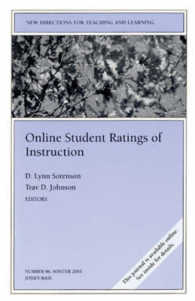Full Description
This rich and remarkable volume offers an overview of the most important schools, movements and trends which make up the theoretical landscape of contemporary international law, as well as the works of over 500 authors. It moves beyond generalization and examines how the relevant literature deals with the basic issues of the international legal system, such as international obligations, legitimacy, compliance, unity and universality, the rule of law, human rights, use of force and economics. It offers insights into the addressees (the state, international organizations, individuals and other private persons), and the construction of international law, including law-making, the relationship between norms, and interpretation. Moreover, it widens the discourse by addressing old, yet enduring, as well as new concerns about the functioning of the international legal system, and presents views of non-international lawyers and political scientists regarding that system. It is a valuable analysis for researchers, students, and practitioners.
Contents
Acknowledgments
Abbreviations
Preface: The Choir Group
Part 1
Essential Elements
1 Introduction
1.1 Theories about Theory
1.2 Theories of or about International Law
2 Thoughts on the Impact of Theory on International Law
3 Important Elements in the Making of Theory
3.1 Ideology
3.2 Polysemy of Terms and Concepts: The Role of Language
3.3 Limits and Limitations of Theory
3.4 History and Histories of International Law
3.5 Methodology and Methods
3.6 International and Domestic Law: Incorporation, Transformation, Coordination, Order of Execution, Adaptation, Approximation, Fusion, Direct Effect, and Resistance
3.6.1 Subsidiarity
3.6.2 Inter-judicial Dialogue
3.6.3 Legal Pluralism from the Viewpoint of the Relationship between International and Domestic Law
3.7 International Legal Theory and Technical and Scientific Expertise
4 Adumbrations of the Theoretical Adventure
4.1 Some Characteristics
4.2 Difficulties in the Assortment of Theorists in Schools and Movements
5 Traceability of Antecedents to Current Scholarship
5.1 Introduction
5.2 The Swing between the Two Mainstream Theories
5.3 Natural Law
5.4 Positivism(s)
5.5 Responses to Traditional Voluntarist Positivism
5.6 Normativism (a System Governed by Legal Norms)
5.7 Aspects of the Sociological Underpinnings of International Law
5.7.1 European Scholarship with "Sociological" Inspiration
5.7.2 American "Exceptionalism"
5.7.3 Singularities of the Soviet Doctrine (1922-1989)
6 Regional and National Traditions: Prolegomena to the Present (from the End of the Second World War to the 1970s)
6.1 Introduction
6.2 Overview of Theories after the Second World War
6.2.1 Europe
6.2.2 United States. Traditional, but also "What Seems Almost Evident [Is] the Difference between You and Me"
6.2.3 Latin America
6.2.4 Africa
6.2.5 Asia
7 Self-referential International Law and the Compelling Need to Also Listen to Others' Voices
8 Concluding Remarks
Part 2
Enduring and New Schools, Movements and Trends
9 Introduction
10 Basic Orientations
10.1 The Liberal Agendas
10.2 The Positivist Stronghold
10.3 Renovated, Expressly Stated, Hidden or Inherited Naturalism
10.4 Realism
10.5 Idealism
10.6 Rationalism and Rationality
10.7 Pragmatism
10.8 Empiricism
10.9 Formalism
11 Other Approaches
11.1 Modernity, Modernism and Post-modernism
11.2 Policy-Oriented Theory, Perspective or Jurisprudence
11.3Structuralism and Post-structuralism
11.4 Constructivism
11.5 Deconstruction
11.6 Critical International Legal Studies
11.7 Third World Approaches to International Law (twail)
11.8 The Feminist Presence
11.9 Functionalism and Institutionalism
11.9.1 Functionalism
11.9.2 Institutionalism in Its Double Sense
11.10 Instrumentalism
11.11 International Regime Theories
12 Universal, Plural, Relative
12.1 Legal Cosmopolitanism
12.2 Constitutionalism and the "Constitutionalization" of International Law
12.3 Legal Pluralism
12.4 Legal Relativism and Relativity
12.5 Role Splitting
13 Further Explorations
13.1 Law and Economics or Rational Choice Approaches to International Law
13.2 General Systems Theory (gst) or Systemic Theory (ST)
13.3 A Place for Chaos Theory
13.4 Current Marxist, Neo-Marxist and Leninist Approaches
13.5 Moving in a "Middle Road"
14 Sociological Aspects of International Law Theories
15 Concluding Remarks
Part 3
Connecting More Writings to Theory
SECTION I
The International Legal System: Important Issues
16 Where is the International Community or Society?
16.1 Evolving Views
17 Ontological and Post-ontological Discourses
17.1 "International Law as Law"
17.2 Mature or Primitive Law
17.3 Discontent
17.4 Law and Crisis
18 General (or Grand) Theories of International Law and General International Law
18.1 In Search of a Current Specimen of General Theory
18.2 General International Law: The Parameters
19 Legal Basis of International Obligations
20 Legitimacy
21 Compliance
22 Unity and Universality
22.1 Unity
22.2 Universality
23 Fragmentation
23.1 Siblings of Fragmentation: Self-contained or Special Regimes
23.2 Cohesion of Special Regimes or Subsystems
24 The Issue of Jurisdiction and Competence
25 Fictions
26 Hegemonic Power and Unilateralism
27 The International Dimension of the Rule of Law
28 Normativity Forming an Integral Part of International Law
28.1 The Safe Port of Human Rights
28.2 Non-use and Use of Force
28.3 International Humanitarian Law (ihl)
28.4 The Economy: No More a Passing Silhouette
29 Concluding Remarks
SECTION II
Flashes about the Addressees, the Fabrication and Operation of International Law
A
The Addressees of International Law
30 The "Users" of International Law: Moving beyond Doctrinal Controversies on "Subjects", "Non-state Actors" and "Participants"
31 The State
31.1 The Concept
31.2 Creation and Recognition
31.3 Sovereignty
31.4 International Legal Personality
31.5 Equality
31.6 Territory
31.7 State Immunity/Immunities
31.8 Responsibility
31.9 Liability
31.10 Self-determination
31.11 Secession
31.12 Succession
31.13 Statehood and "One Size Fits All" Approaches
32 International Organizations
32.1 Role and Legal Status
32.2 Responsibility and Accountability of International Organizations. A Story of Loopholes
33 "Individuals" and Other Private Persons
33.1 An Unfinished Symphony
33.2 Non-governmental Organizations (ngo?s) and the International Civil Society
B
Aspects of the Fabrication and Operation of International Law
34 Law-Making
34.1 Producers
34.2 Main Products and Modes of Fabrication
34.2.1 Customary International Law
34.2.2 Treaties
34.2.3 General Principles of Law
35 Expanding the Products and Modes of Fabrication
35.1 Soft Law
35.2 Standards
35.3 A Converging Category: Transnational Law
36 Relationship between Norms
36.1 Hierarchy of Norms
36.2 The Intertwined Duo of Jus Cogens and Obligations Erga Omnes
36.2.1 Jus Cogens
36.2.2 Obligations Erga Omnes
36.3 Successive, Parallel and Contradictory Commitments. The Issue of Transtextuality
37 Interpretation
38 Concluding Remarks
SECTION III
Widening the Discourse
39 Interrogations and Expectations
39.1 Progress and "Progressive Development"
39.2 Democracy
39.3 The Eternal Quest for Ethics and Morality
39.4 Fluctuations on Justice Stemming from International Law
39.5 Globalization
39.6 Governance and Global Administrative Law
39.7 International Law and Politics
39.8 International Environmental Law
40 A Skeleton Meeting of Minds
40.1 Attempts for a Dialogue between International Law and International Relations (IR) Theories
40.2 General Theories of Law and Political Science Touching on International Law
40.2.1 General Theories of Law
40.2.2 Other Doctrines Addressing Questions Related to International Law
41 Concluding Remarks
42 Final Conclusions: The Choristers' Performances
Index of Authors
Index of Subjects








